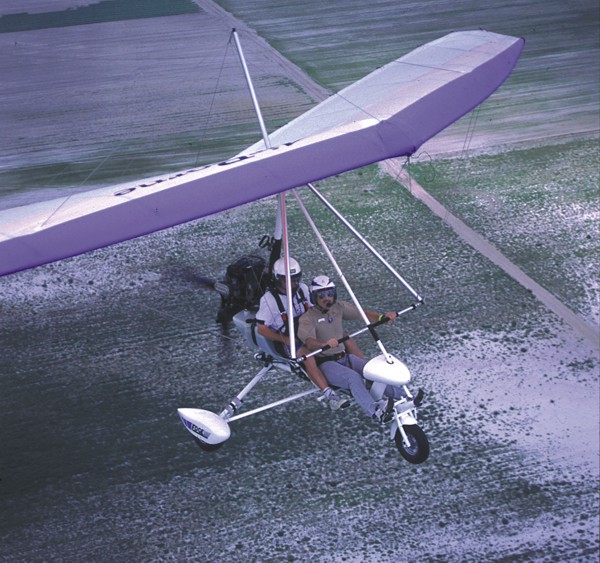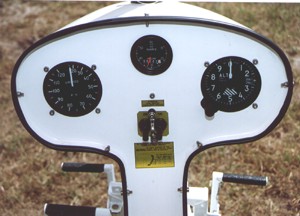
For years now, the boys from “down under” at AirBorne Australia, led by co-owner Russell Duncan, have been coming to America. The ultralight they have been showing is the deluxe Edge Executive model. It’s a beauty, but the company lacked a simpler, lower-cost model. No more! In April of last year, Duncan and crew debuted what they call the Edge X Wizard model. The “Edge X” series refers to the new trike carriage, above which you can have the double-surface Edge wing, making the Executive trike, or you can select the new single-surface Wizard wing. It is this new offering that is the focus of this pilot’s report. Smoothly finished in all-white powder coating, and lacking the nose pod and aft fairing, the new Edge X trike carriage looks light and basic. At only $11,700 fully assembled, it should find a market in the USA, I feel. (The figure is complete in every way except for an import shipping charge, which U.S.











